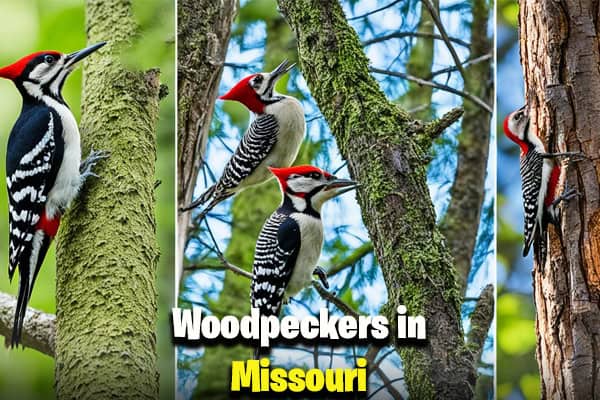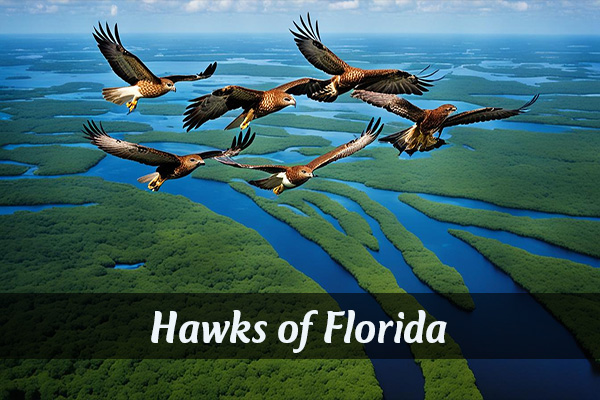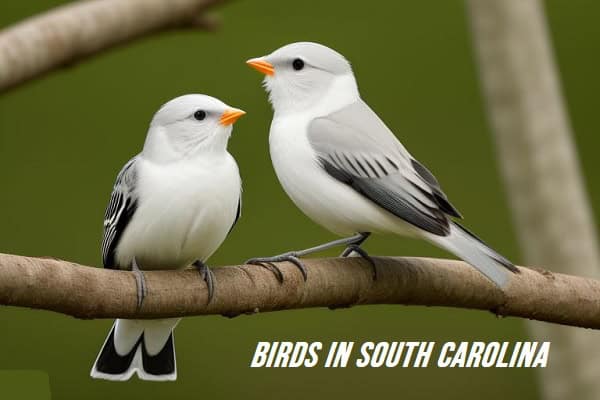Woodpeckers in Missouri (8 Species to Know)
Did you know Missouri has eight woodpeckers? These birds brighten our forests with their colors and help control insects. They keep trees healthy. Let’s dive into the world of Missouri’s woodpeckers and learn about their traits, habits, and where they live.
If you love birdwatching or are just beginning, knowing about Missouri’s woodpeckers can deepen your connection with nature. These birds make our state’s woods and parks more vibrant.
Common Woodpeckers Found in Missouri
- Red-bellied Woodpecker
- Red-headed Woodpecker
- Pileated Woodpecker
- Downy Woodpecker
- Hairy Woodpecker
- Lewis’s Woodpecker
- Northern Flicker
Overview of Woodpecker Species in Missouri
In Missouri, we find a wide variety of woodpecker species. These birds thrive in different places like lush forests, wetlands, and even cities. There are eight unique woodpecker species here. They play a key role in keeping the environment balanced.
Importance of Biodiversity
Woodpeckers are important for Missouri’s ecosystem health. They help control pests by eating insects that could harm trees and plants. By digging into trees, they help fungi and other organisms grow, making forests healthier.
Protecting woodpeckers and their homes makes the environment more stable. When we help these birds, we also help many other animals that live in the same places. The links between woodpeckers and their homes show why we must keep working to protect them in Missouri.
1. Downy Woodpecker
- Scientific name – Dryobates pubescens
- Lifespan – 11 years (maximum recorded)
- Size – (16 cm)
- Weight – (0.9 oz)
- Wingspan – (28 cm)
The Downy Woodpecker is a common sight in our backyards and parks. They are small and have striking black-and-white feathers. Their unique looks and behaviors make them fun to spot.
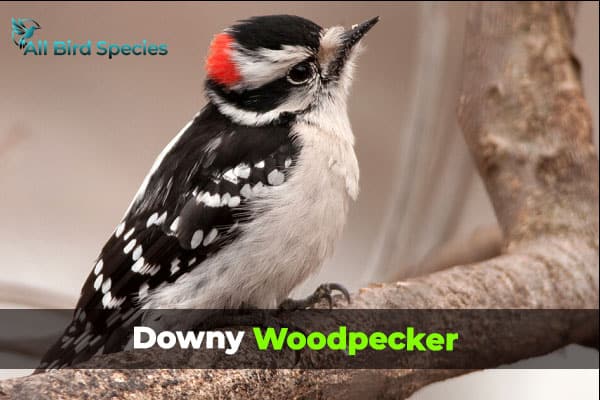
Identification Features
This bird is small, and about six to seven inches long. Males have a red mark on their heads. They have a short bill perfect for finding insects in tree bark.
Diet and Foraging Habits
They eat insects like beetles and caterpillars under tree bark. Birdwatchers often see them tapping on trees for food. They also visit feeders for suet and seeds, making them common in cities.
Best Locations to Spot Them
Downy Woodpeckers live in many places. You can find them in:
- Deciduous forests
- Urban parks
- Backyards with trees
- Woodlands
They can be seen in parks or even in our backyards. The Downy Woodpecker is always a joy to watch.
2. Hairy Woodpecker
- Scientific name – Leuconotopicus villosus
- Lifespan – 15 years (maximum recorded)
- Size – (22 cm)
- Weight –(67 g)
- Wingspan – (37 cm)
Hairy Woodpeckers are similar to Downy Woodpeckers but have their own unique traits. They live in different places and look distinct. Knowing how to spot a Hairy Woodpecker makes birdwatching more exciting.

How to Tell Them Apart from Downy Woodpeckers
Spotting a Hairy Woodpecker is easy with these key differences:
- Size: Hairy Woodpeckers are bigger than Downy ones.
- Bill Length: They have a longer, thicker bill compared to the Downy’s shorter, more slender one.
- Color Patterns: Both have a red patch, but the Hairy Woodpecker’s is bigger.
Preferred Habitats
Hairy Woodpeckers love big trees in various forests. They also enjoy urban areas with lots of mature woods. Here’s where you can find them:
| Habitat Type | Characteristics |
|---|---|
| Deciduous Forests | Rich in hardwood species, providing ample nesting sites. |
| Coniferous Forests | Offer a diverse range of feeding options through various tree types. |
| Urban Areas | Nesting in large, mature trees that thrive in parks and gardens. |
3. Lewis’s Woodpecker
- Scientific name – Melanerpes lewis
- Lifespan – 10 years (maximum recorded)
- Size – 10.6 in
- Weight – 4 oz
- Wingspan – 19.9 in
Lewis’s Woodpecker is a bird that birdwatchers love to see. It has special ways of eating and moves around at different times of the year. Unlike other woodpeckers, it catches insects while flying instead of pecking at trees. This makes it a unique bird to watch.

Unique Feeding Habits
This woodpecker eats specially, perfect for open woodlands. It sits on dead trees, waiting for insects to fly by. It moves quickly and skillfully in the air to catch its food. Watching it hunt is a sight to see.
Range and Seasonal Movements
The Lewis’s Woodpecker lives in many places but moves with the seasons. In winter, it goes south to find warmth and food. When spring comes, it heads north to its home. Knowing where and when to look for it makes birdwatching more fun.
4. Northern Flicker
- Scientific name – Colaptes auratus
- Lifespan – 9 years (maximum recorded)
- Size – (32 cm)
- Weight – (126.5 g)
- Wingspan – (48 cm)
Northern Flickers are interesting birds in the woodpeckers family in Missouri. They stand out because they forage on the ground, unlike many other woodpeckers. There are two main types: the Yellow-shafted and the Red-shafted. Each has bright feathers that show when they fly.

Identification: Yellow-shafted vs Red-shafted
It’s easy to tell Northern Flickers apart by looking at their differences. The Yellow-shafted Flicker lives in the east and north of the U.S., while the Red-shafted is found in the west. Here are some key things to notice:
- Distinctive markings on the face and a black crescent on the chest.
- Yellow (Yellow-shafted) or red (Red-shafted) underwing feathers visible in flight.
- Size comparable to a robin, making them smaller than typical woodpeckers.
Where to Find Them
To see these birds, check out places that fit their lifestyle. Good spots for finding Missouri Flickers include:
- Open woodlands with a mix of trees and ground cover.
- Urban parks with grassy areas and scattered trees.
- Forested edges where they can forage for insects and seeds.
It’s great to see these amazing birds in their natural habitats. They add to our experience with Missouri’s wildlife.
5. Pileated Woodpecker
- Scientific name – Dryocopus pileatus
- Lifespan – 12 years (maximum recorded)
- Size – (17,5 in)
- Weight – (300 g)
- Wingspan – (70.5 cm)
The Pileated Woodpecker is one of the biggest woodpeckers in North America. It’s known for its large size and eye-catching look. It’s easy to spot in our forests because of its black and white feathers and bright red crest.
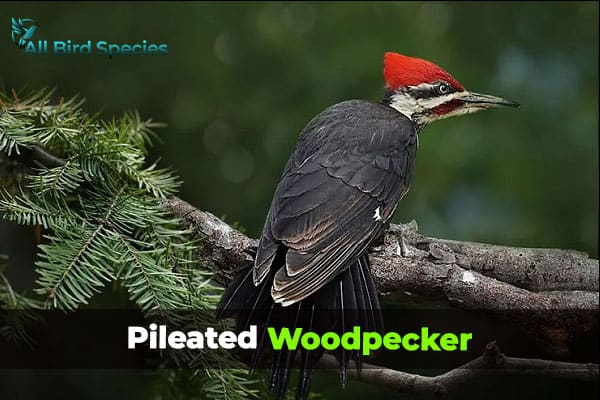
These birds are a favorite among bird watchers and nature lovers. Their size and unique features make them stand out.
Size and Distinctive Features
The Pileated Woodpecker is the largest woodpecker in North America. Adults can grow up to 19 inches long and have a wingspan of nearly 30 inches. Their long, sharp bills help them dig big holes in trees to find food.
They also have a loud call that echoes through the forest. This makes it easier for us to find them.
Diet Preferences and Feeding Habits
The Pileated Woodpecker eats mostly ants, wood-boring insects, and other bugs found in dead trees. They make large, rectangular holes in wood as they search for food. Besides insects, they also eat fruits and nuts, helping to keep their habitat balanced.
6. Red-bellied Woodpecker
- Scientific name – Melanerpes carolinus
- Lifespan – 12 years (maximum recorded)
- Size – (24 cm)
- Weight – (73.5 g)
- Wingspan – (42 cm)
The Red-bellied Woodpecker is a common sight in Missouri backyards. Its striking looks make it easy to spot as it searches for food. It has a pale belly and a striped back, which is a treat for birdwatchers.
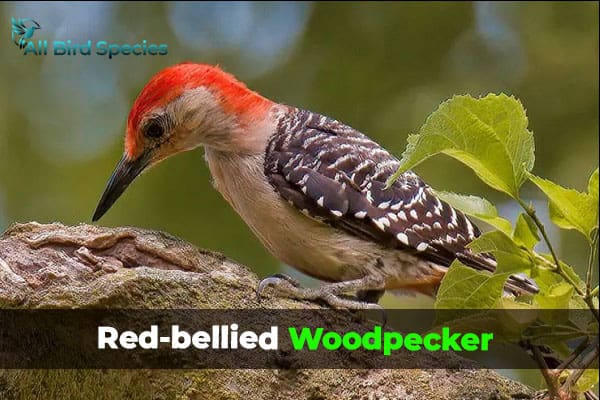
The bird’s red belly is subtle, often surprising those expecting a brighter color. This makes it a favorite among birdwatchers. Its unique look is a big reason why people love to see it.
These woodpeckers live in many parts of Missouri, adapting well to different environments. They can be found in both woods and cities, enjoying suet and seeds at feeders. Birdwatching in Missouri often brings us close to these interesting birds in both rural and city areas.
Exploring Missouri, we see where these woodpeckers live. They like deciduous forests, parks, and gardens. By keeping these places healthy, we help these birds thrive. This lets us enjoy watching them and makes birdwatching in Missouri special.
7. Red-headed Woodpecker
- Scientific name – Melanerpes erythrocephalus
- Lifespan – 9 years (average) 12 years (maximum recorded)
- Size – (19-23 cm)
- Weight – (56-91 g)
- Wingspan – (42 cm)
The Red-headed Woodpecker (Melanerpes erythrocephalus) is one of the few native red-headed bird species in Missouri. This medium-sized woodpecker is easily recognized by its vivid red head, white belly, and striking black back with contrasting white wing patches.

This species is known for a variety of harsh calls, with the most commonly heard being a rough, shrill ‘tchur’. While it resembles the call of the Red-bellied Woodpecker, it is less rolling and has a lower pitch.
Typically found in deciduous woodlands with oak and beech trees, the Red-headed Woodpecker also inhabits sparsely wooded grasslands, forest edges, swamps, dead tree groves, parks, farmland, and recently cleared areas.
They create nesting cavities in dead trees, dead limbs of live trees, or even in buildings and utility poles. Uniquely, they often reuse the same nesting cavity each year, a rare behavior among woodpecker species.

